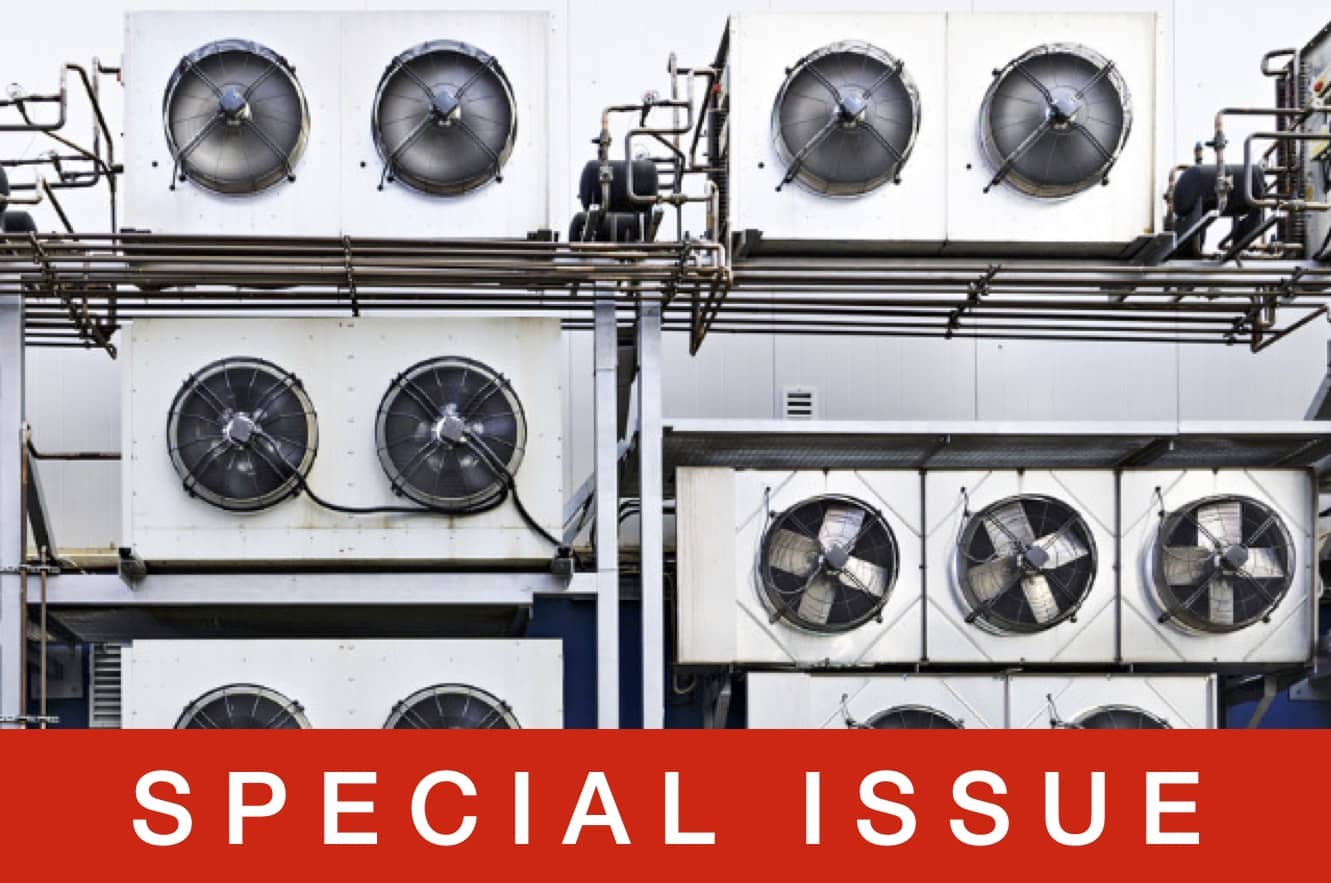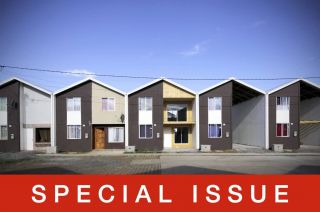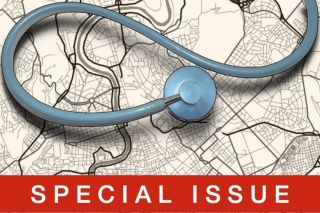
www.buildingsandcities.org/journal-content/special-issues/alternatives-air-conditioning2.html
Alternatives to Air Conditioning

In an increasingly hotter world, what policies, designs, technologies & behaviours can provide thermal adequacy for coolth?
Buildings and cities have become highly dependent on air-conditioning and mechanical ventilation. Without significant intervention demand for air-conditioning (AC) is projected to rise by 700% by 2050. The implications of an unsustainable increase in cooling demand are being recognised in many countries around the world.
Recent discussions about 'build back better' after the Covid-19 pandemic afford an opportunity to reconsider many contemporary practices in the built environment: health and wellbeing, thermal comfort and the agency of building occupants, adaptation to climate change, energy use and environmental impacts, economics and equity, social expectations and demographics, design and innovation, thermal characteristics of buildings and cities. In addition, many countries have stipulated that new buildings must be carbon neutral. Climate change will create an increasingly warmer world - impacting on summer overheating in buildings. This is an urgent concern for both mitigation and adaptation: how can thermal comfort be provided during hotter summers without the GHG emissions? 'Conventional' air conditioning will soon be technologically redundant. Can our cities and buildings be designed to have little or no mechanical intervention?
Guest editors: Brian Ford, Dejan Mumovic, Rajan Rawal
This special issue explores alternative approaches to providing thermal comfort and ventilation in different climatic zones across the world at the scales of building, neighbourhood and city. It considers the implications of these alternatives across a range of issues: health, wellbeing, air quality and heat stress; technical / design solutions; social expectations and practices; climate change; policy and regulation; supply chain and procurement; education and training. It includes a range of disciplines: geography, sociology, anthropology, behavioural sciences, architecture, engineering, public health, economics, energy and environmental assessment.
Collectively the papers in this special issue describe a range of viable approaches to 'alternatives to air-conditioning' and contribute to an understanding of the opportunities for better informed practice and policy. These alternatives embrace much more than a technological issue: they require holistic design thinking, and include social aspects (expectations, behaviours, practices).
However, the special issue reveals a number of significant gaps which are discussed in the editorial. New pathways to successfully implement alternatives to air conditioning need to be led by policy and regulation, as well as new business models in creating market demand. In this transition to a low carbon future the questions are not just 'What?' and 'Why?', but primarily 'How?'. A critical issue will be redefining professional practices, design decision processes, performance standards and capabilities for designing for performance and optimisation processes.
Table of contents
Alternatives to air-conditioning: policies, design, technologies, behaviours (editorial)
B. Ford, D. Mumovic & R. Rawal
Technological
transitions in climate control: lessons from the House of Lords
H. Schoenefeldt
Living with air-conditioning:
experiences in Dubai, Chongqing and London
N. Murtagh, S.
Badi, Y. Shi, S. Wei & W. Yu
Understanding
air-conditioned lives: qualitative insights from Doha
R. Hitchings
Ceiling-fan-integrated
air-conditioning: thermal comfort evaluations
M. Luo, H. Zhang,
Z. Wang, E. Arens, W. Chen, F. S. Bauman & P. Raftery
Outdoor PM2.5
air filtration: optimising indoor air quality and energy
E. Bellas &
D. Lucina
Summertime
overheating in UK homes: is there a safe haven?
P. Drury, S.
Watson & K. Lomas
Energy retrofit
and passive cooling: overheating and air quality in primary schools
D. Grassie, Y.
Schwartz, P. Symonds, I. Korolija, A. Mavrogianni & D. Mumovic
Integrating low energy cooling and ventilation strategies in
Indian residences
M. J. Cook, Y.
Shukla, R. Rawal, C. Angelopoulos, L. Caruggi-de-Faria, D. Loveday, E. Spentzou
& J. Patel
Internal thermal
mass for passive cooling and ventilation: adaptive comfort limits, ideal
quantities, embodied carbon
T. de Toldi, S.
Craig & L. Sushama
Overheating
assessment in Passivhaus dwellings: the influence of prediction tools
V. L. Goncalves,
V. Costanzo, K. Fabbri & T. Rakha
Comfort,
behaviour and energy: geothermal air-conditioning in a residential development
L. Thomas, A.
Woods, R. Powles, P. Kalali & S. Wilkinson
An alternative
approach to delivering safe, sustainable surgical theatre environments
C. A. Short, A.
W. Woods, L. Drumright, R. Zia & N. Mingotti
Air-conditioning
in New Zealand: power and policy
H. Byrd, S.
Matthewman & E. Rasheed
Commentaries
Providing Adequate Thermal Comfort in a Hotter World
E. Blennerhassett
Practical Approaches to Cooling: A UK Perspective
J. Godefroy & A. Mylona
Governments' Role in Providing Thermal Adequacy
B. Dean and E.W. Chege
Latest Peer-Reviewed Journal Content
A framework for 1.5°C-aligned GHG budgets in architecture
G Betti, I Spaar, D Bachmann, A Jerosch-Herold, E Kühner, R Yang, K Avhad & S Sinning
Net zero retrofit of the building stock [editorial]
D Godoy-Shimizu & P Steadman
Co-learning in living labs: nurturing civic agency and resilience
A Belfield
The importance of multi-roles and code-switching in living labs
H Noller & A Tarik
Researchers’ shifting roles in living labs for knowledge co-production
C-C Dobre & G Faldi
Increasing civic resilience in urban living labs: city authorities’ roles
E Alatalo, M Laine & M Kyrönviita
Co-curation as civic practice in community engagement
Z Li, M Sunikka-Blank, R Purohit & F Samuel
Preserving buildings: emission reductions from circular economy strategies in Austria
N Alaux, V Kulmer, J Vogel & A Passer
Urban living labs: relationality between institutions and local circularity
P Palo, M Adelfio, J Lundin & E Brandão
Living labs: epistemic modelling, temporariness and land value
J Clossick, T Khonsari & U Steven
Co-creating interventions to prevent mosquito-borne disease transmission in hospitals
O Sloan Wood, E Lupenza, D M Agnello, J B Knudsen, M Msellem, K L Schiøler & F Saleh
Circularity at the neighbourhood scale: co-creative living lab lessons
J Honsa, A Versele, T Van de Kerckhove & C Piccardo
Positive energy districts and energy communities: how living labs create value
E Malakhatka, O Shafqat, A Sandoff & L Thuvander
Built environment governance and professionalism: the end of laissez-faire (again)
S Foxell
Co-creating justice in housing energy transitions through energy living labs
D Ricci, C Leiwakabessy, S van Wieringen, P de Koning & T Konstantinou
HVAC characterisation of existing Canadian buildings for decarbonisation retrofit identification
J Adebisi & J J McArthur
Simulation and the building performance gap [editorial]
M Donn
Developing criteria for effective building-sector commitments in nationally determined contributions
P Graham, K McFarlane & M Taheri
Reimagining circularity: actions for optimising the use of existing buildings
R Lundgren, R Kyrö, S Toivonen & L Tähtinen
Effective interdisciplinary stakeholder engagement in net zero building design
S Vakeva-Baird, F Tahmasebi, JJ Williams & D Mumovic
Metrics for building component disassembly potential: a practical framework
H Järvelä, A Lehto, T Pirilä & M Kuittinen
The unfitness of dwellings: why spatial and conceptual boundaries matter
E Nisonen, D Milián Bernal & S Pelsmakers
Environmental variables and air quality: implications for planning and public health
H Itzhak-Ben-Shalom, T Saroglou, V Multanen, A Vanunu, A Karnieli, D Katoshevski, N Davidovitch & I A Meir
Exploring diverse drivers behind hybrid heating solutions
S Kilpeläinen, S Pelsmakers, R Castaño-Rosa & M-S Miettinen
Urban rooms and the expanded ecology of urban living labs
E Akbil & C Butterworth
Living with extreme heat: perceptions and experiences
L King & C Demski
A systemic decision-making model for energy retrofits
C Schünemann, M Dshemuchadse & S Scherbaum
Modelling site-specific outdoor temperature for buildings in urban environments
K Cebrat, J Narożny, M Baborska-Narożny & M Smektała
Understanding shading through home-use experience, measurement and modelling
M Baborska-Narożny, K Bandurski, & M Grudzińska
Building performance simulation for sensemaking in architectural pedagogy
M Bohm
Beyond the building: governance challenges in social housing retrofit
H Charles
Heat stress in social housing districts: tree cover–built form interaction
C Lopez-Ordoñez, E Garcia-Nevado, H Coch & M Morganti
An observational analysis of shade-related pedestrian activity
M Levenson, D Pearlmutter & O Aleksandrowicz
Learning to sail a building: a people-first approach to retrofit
B Bordass, R Pender, K Steele & A Graham
Market transformations: gas conversion as a blueprint for net zero retrofit
A Gillich
Resistance against zero-emission neighbourhood infrastructuring: key lessons from Norway
T Berker & R Woods
Megatrends and weak signals shaping future real estate
S Toivonen
A strategic niche management framework to scale deep energy retrofits
T H King & M Jemtrud
Generative AI: reconfiguring supervision and doctoral research
P Boyd & D Harding
Exploring interactions between shading and view using visual difference prediction
S Wasilewski & M Andersen
How urban green infrastructure contributes to carbon neutrality [briefing note]
R Hautamäki, L Kulmala, M Ariluoma & L Järvi
Implementing and operating net zero buildings in South Africa
R Terblanche, C May & J Steward
Quantifying inter-dwelling air exchanges during fan pressurisation tests
D Glew, F Thomas, D Miles-Shenton & J Parker
Western Asian and Northern African residential building stocks: archetype analysis
S Akin, A Eghbali, C Nwagwu & E Hertwich
Join Our Community

The most important part of any journal is our people – readers, authors, reviewers, editorial board members and editors. You are cordially invited to join our community by joining our mailing list. We send out occasional emails about the journal – calls for papers, special issues, events and more.
We will not share your email with third parties. Read more



Latest Commentaries
COP30 Report
Matti Kuittinen (Aalto University) reflects on his experience of attending the 2025 UN Conference of the Parties in Belém, Brazil. The roadmaps and commitments failed to deliver the objectives of the 2025 Paris Agreement. However, 2 countries - Japan and Senegal - announced they are creating roadmaps to decarbonise their buildings. An international group of government ministers put housing on the agenda - specifying the need for reduced carbon and energy use along with affordability, quality and climate resilience.
Building-Related Research: New Context, New Challenges
Raymond J. Cole (University of British Columbia) reflects on the key challenges raised in the 34 commissioned essays for Buildings & Cities 5th anniversary. Not only are key research issues identified, but the consequences of changing contexts for conducting research and tailoring its influence on society are highlighted as key areas of action.